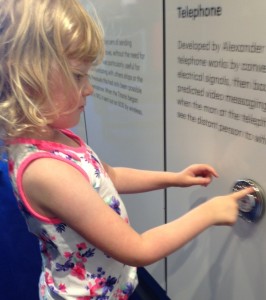We’re very sophisticated at using different tones of voice from an early age. From our first playground moments, most of us are aware that we use certain words for specific people. We’re brilliantly adaptable at this, so there is no reason why we can’t get it right with our writing, too.
Using the most appropriate tone of voice for your website, blog or printed material makes sure that you are addressing the people you want to reach in the way that works best and appeals most to them. Are you talking to the teacher or your classmates?
What is tone of voice?
Simply, it’s how we speak, or in this case, write.
The easiest way to think of tone of voice is to imagine your brand is a person (easy enough if you’re a self-employed tattooist; harder if you’re a hotel). If you ran into them, how would they greet you? Are they chatty or quite formal? Are they relaxed or lively? Do they handshake or hug? If your hotel is a five star establishment catering for high-end business people, the brand-person will greet you warmly but politely, using fairly formal but cordial language. If it’s a seaside B&B, they might offer you a scone (linguistically speaking).
Why do we need one?
How a business communicates is a crucial part of its brand. A marketing expert could tell you that the voice builds confidence, helps identify the unique qualities of a brand, and creates consistency to support the brand values.
From the writer’s point of view, it makes sure we’re saying the right things to our audience. Some pieces of writing have to be general as they have a broad audience (the BBC news website for example), and then general principles of clear writing apply. At the other end of the scale, there are many businesses that speak to very defined customers – think of really esoteric products and services (erm…reptile food?), or very specific tribes (anything that’s opened in Shoreditch recently). If you’re writing B2B (business to business) text, you may be more formal than if you’re selling cupcakes to general customers.
You may be explaining a complicated service to a lay audience, and that’s one of the occasions when thinking about your voice is crucial – you can’t address your non-expert customers in the same way you’d speak to one of your colleagues. It often takes real conscious effort to step back and talk about your specialist subject using a different vocabulary.
How do we find our voice?
There are many good marketing businesses that can help you with this – it’s a great topic for a brainstorming workshop. This isn’t always possible or affordable, so here are a few suggestions, from the writing point of view.
Choose a handful of words that best describe your business. Quality, welcoming, good value, friendly, professional, expert, innovative, quirky, classic, business-like, relaxed, fun, creative… Go with three or four. If you’re a high-end retailer, you may have chosen quality, expert, classic, for example. Then, every time you write a section of text, look over it again. Think – do my words reflect these qualities? Use your chosen words, but don’t overdo it. Think of synonyms, and then you start to build your own vocabulary.
I create a lexicon for the business. For most of my clients, I have a list of words and phrases that suit their brand and (I hope) appeal to their audience(s). To return to the posh shop example, I may have added trusted, service, professional, indulgent, elegant, and no doubt a whole host of superlatives.
Next, how do you want to talk to them? Are you Big Sister dispensing hair care advice, or Vidal Sassoon doing the same thing? Do you want to seem friend or expert? Simple things like how often you use the word “you” establishes the level of warmth you want to get though, as it builds a direct rapport. Think about the real physical customers you come into contact with – how do they speak?
I’d also add, be as authentic as possible. Look how much we all cringe when politicians attempt to be more “street”. As a writer I’m used to being adaptable and borrowing other people’s voices – but I still know my limitations, and didn’t take on the job that required the writing to have “a Jamaican lilt”… If you have a colleague or friend who is closer to the target market than you are, use them!
Now speak!
The best thing about this exercise is that you really think about the way you write. It’s good to pause and think about how you speak, how your actual business would speak if it could, and how your customers themselves speak.
Keep your three or four main words in mind, and go back to them constantly. If you read a page or paragraph and it doesn’t feel “extreme, funky, young” and you think it should, revisit that writing. I keep the lexicon, the word-list, in front of me when I’m writing for a specific client – it’s a handy crib if I’m feeling short of suitable words.
And as ever, I’m always happy to help, and can work with you to create a tone of voice document as a handy reference for your business writing (shameless, self-publicist, brazen…).
